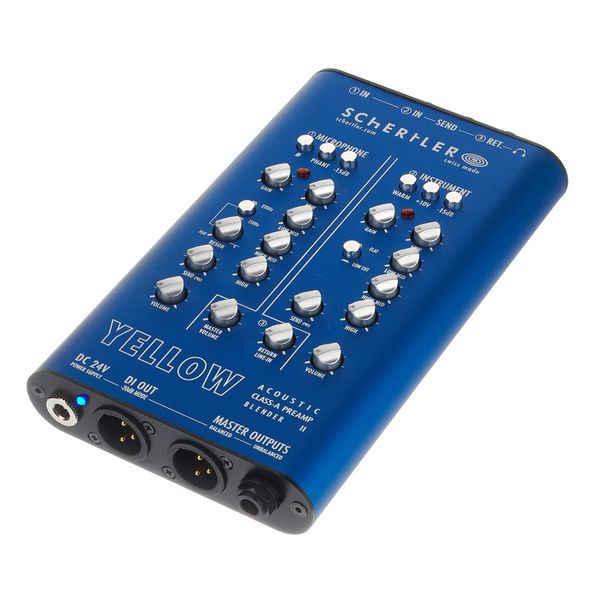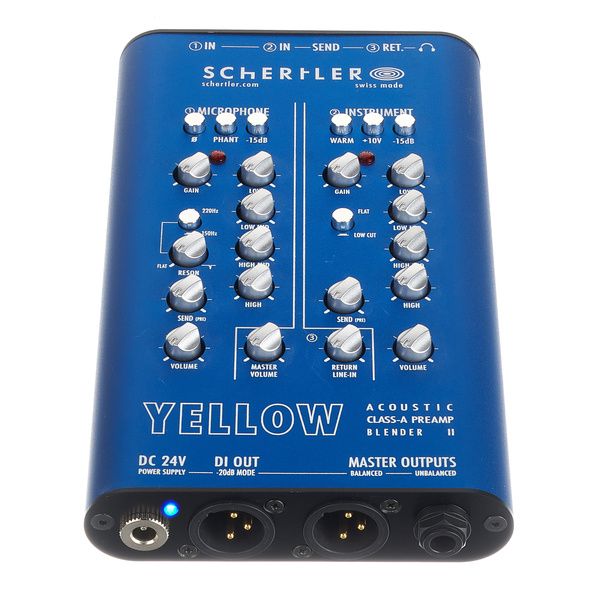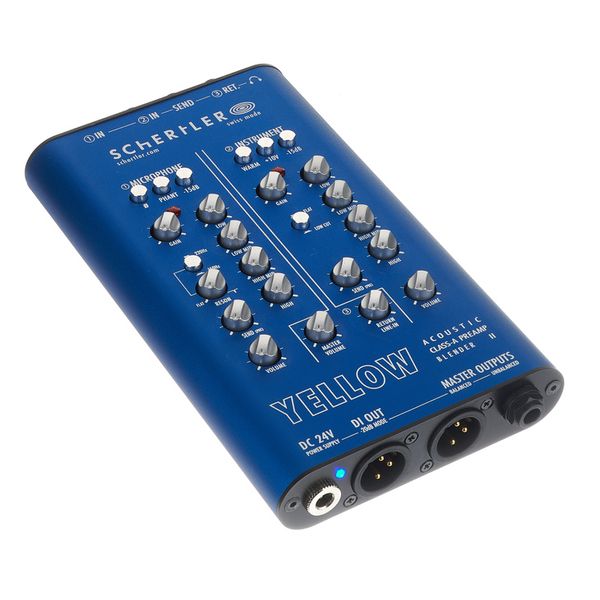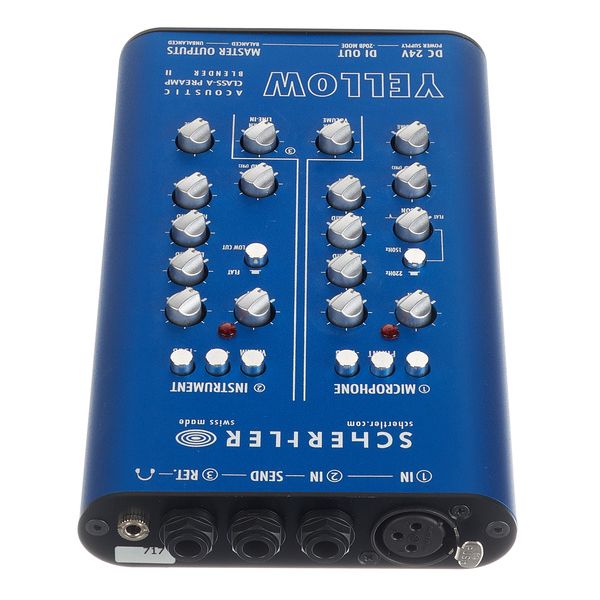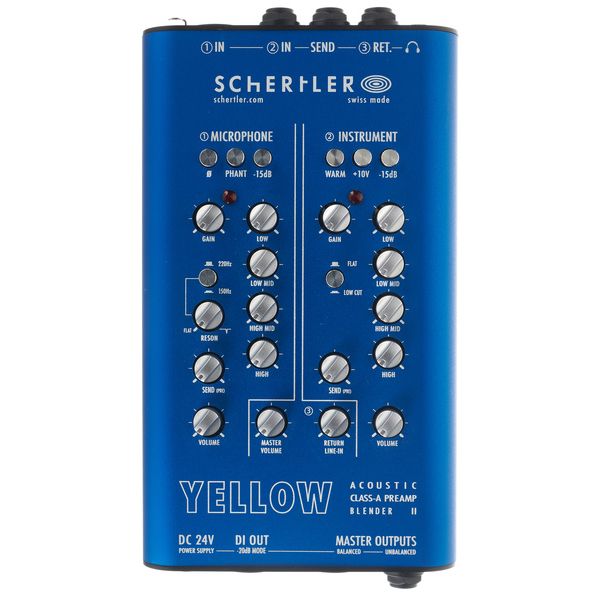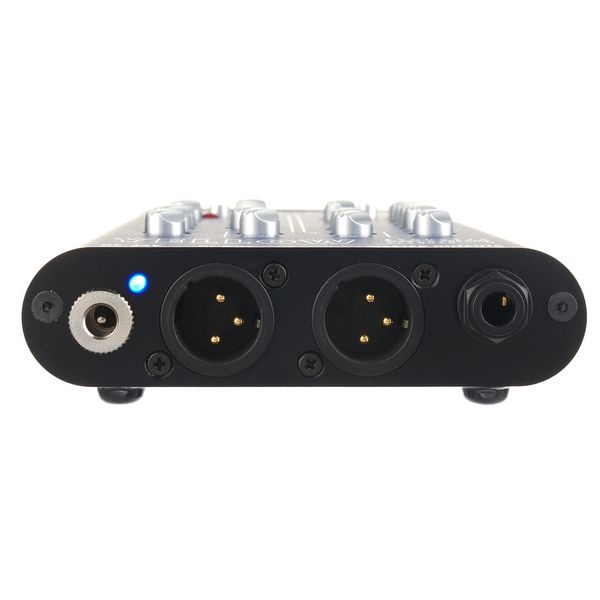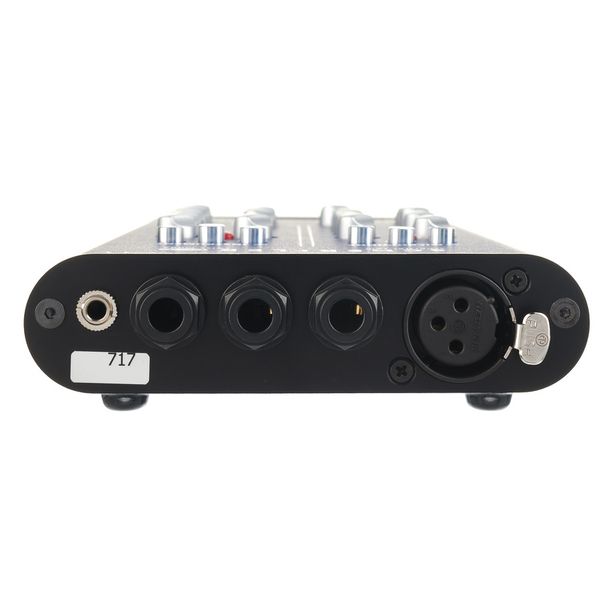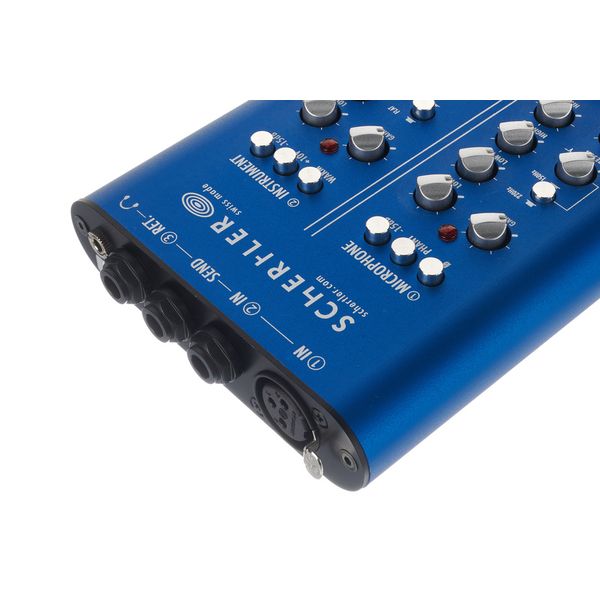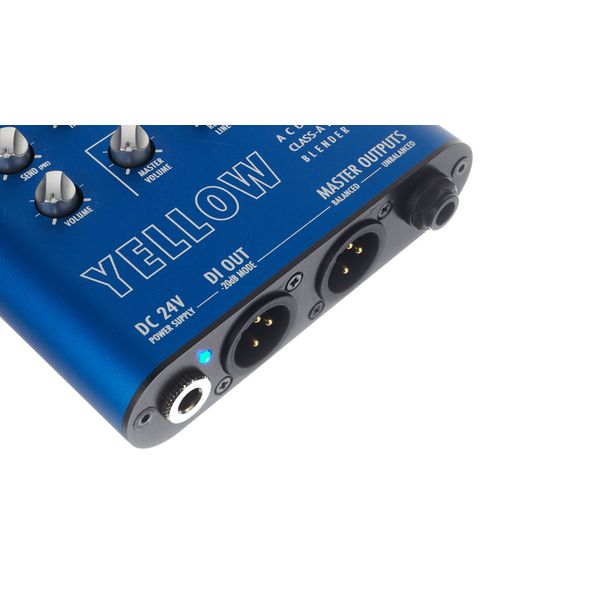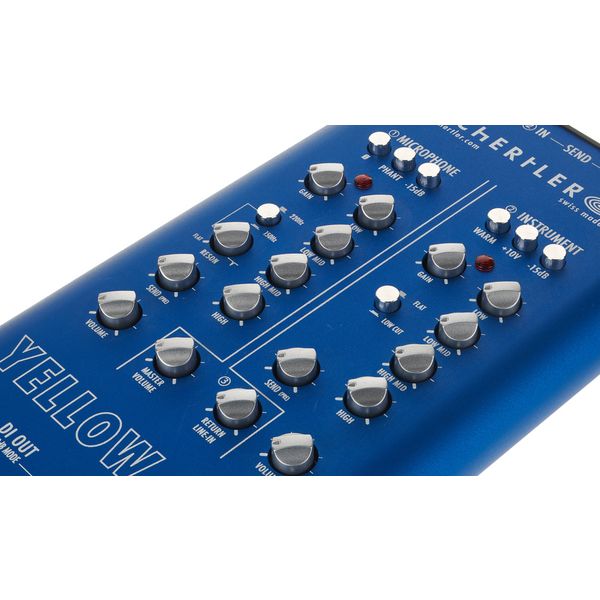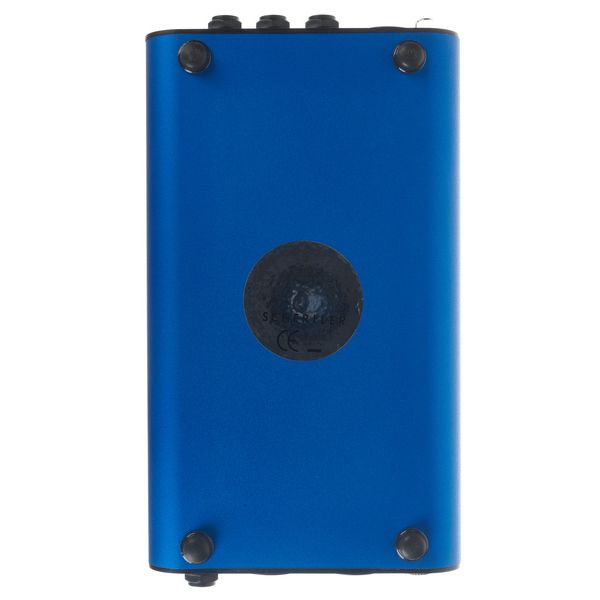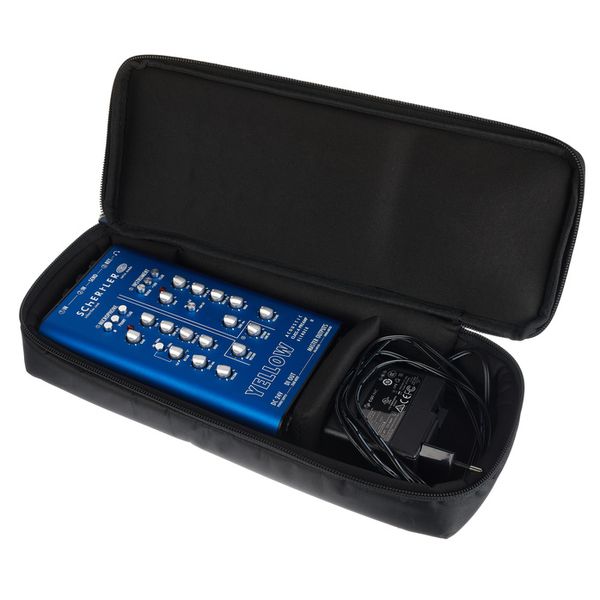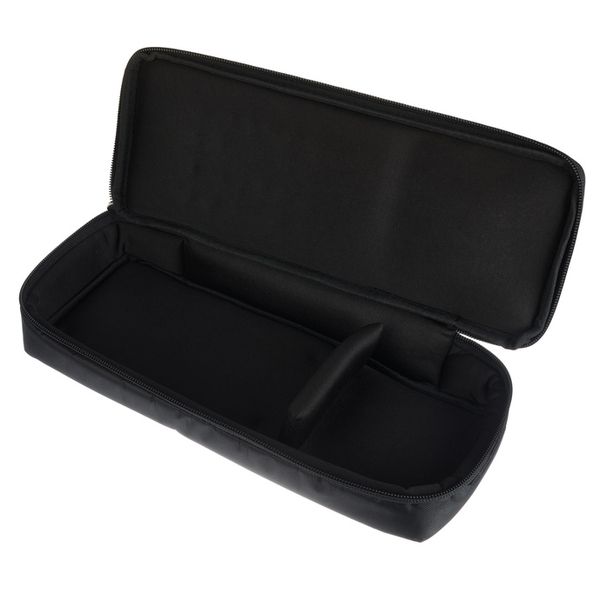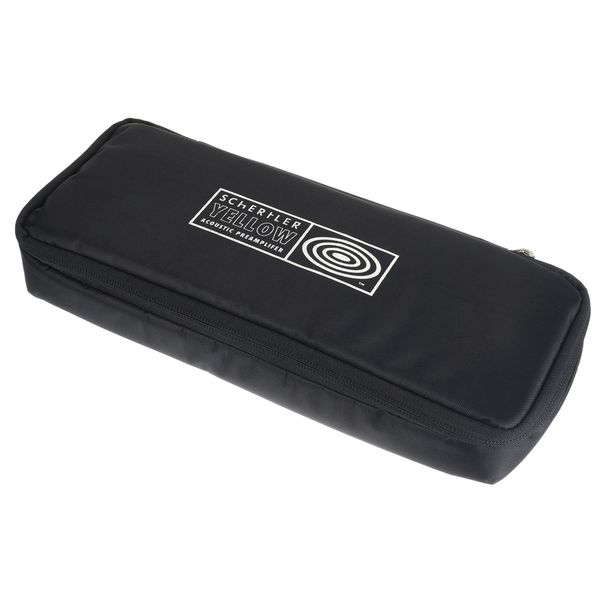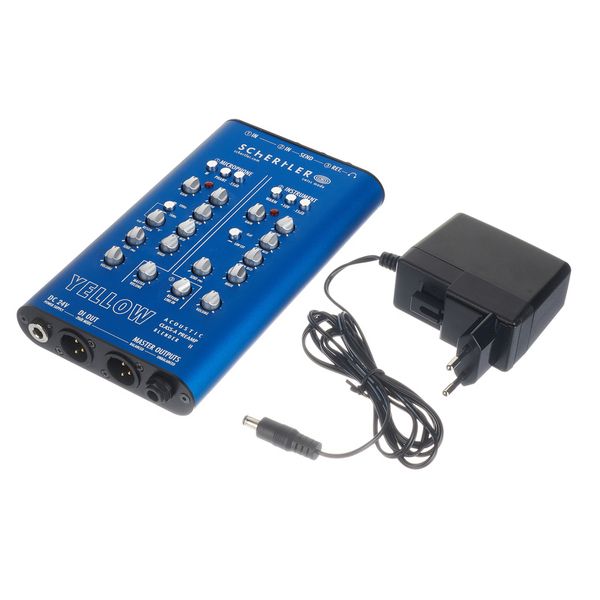I recently added Schertler's Yellow Blender to my double bass rig. Given that I'm playing Velvet Compas 180s strings and amplifying the bass with a Schertler Stat-B and a Unico amp, you can guess I'm rather well inclined towards Schertler products - they cost me a lot, but give me the sound I want.
I was never quite convinced about the Blender from the very beginning, starting with the price and by small details such as the absence of a combo-jack on the first channel (XLR only). In the end, I took the plunge because I found myself often playing directly into the PA and needed a chance to blend two channels and give a single sound to the sound engineer, the same way I do when I have my Unico with me (which sports three independent channels, each featuring phantom power).
There are a few odd things about the Blender. First, the disposition of the I/O connections: everything coming from you (inputs, send/return, headphones-jack) is placed on the upper/farther side of the unit, while everything leaving the unit to go elsewhere (outputs, DI, power) is on the lower/closer side of the unit. This produces a quite unelegant cable mess if you want to make use of the full capabilities of the unit, since every cable systematically comes from somewhere and has to reach a connector at the other side the unit.
Next to this, the unit is really meant for the pickup+microphone combination. I tried for example to blend Stat-B and Realist: both pickups sound awesome on the second channel, but the realist sounded very weak on the first channel (for which I needed an adapter, BTW, as the first channel is XLR only, no Combo, as I wrote above - I also didn't feel like hooking up the Stat-B there because of the 48V phantom instead of 10V). I thus couldn't get on the Blender what for me was a bread-and-butter setup on the Unico. Bummer.
Chance was that the Realist died on me short after the arrival of the Blender, and that I moved to a pickup + mic setup, settling for the old Stat-B + DPA 4099b. For this (bloody expensive) setup, the Blender is just perfect: it gives me perfect control of the two inputs via the two independent four-channel EQs, and sports nice little details such as a phase invert switch on the mic channel, separate send controls, and -15dB switches - a brand new world of possibilities compared to the Pre-III that came with the Stat-B. This makes the Blender a sort of swiss army knife for the acoustic musician: whatever situation you are thrown at, you have all the right knobs to make yourself comfortable and make the best out of your instrument's sound - right there at your feet.
Sound-wise we are obviously on the high-end side of the bank. I couldn't so far spot any major improvements over the Unico, but well... that's the Unico, and I have yet to get acquainted to the finer grain of the DPA mic I have on my bass now. What I can say for sure is that the final result is very "acoustic" and pretty close to the "sound of my bass, just louder" - it's hard to disentangle their relative share on the final result just yet. Impressively, the sound remains quite consistent even when hooking up the blender to plain normal bass amps (through the return jack). That impressed me quite a bit. I shall add that the unit is super-light (the AC-DC adapter a bit less so), making it a very nice travel solution and giving you a relative peace of mind while playing en route without your own equipment.
Finally, I would certainly recommend this unit to all those fellow bass players who want to "blend their own" and stay in control of the sound they output to the console/amp under different circumstances, provided they mix pickup and mic. Those who instead blend two different pickups shall look elsewhere or at least try before buying. Next to acoustic instrumentalists, I can imagine the blender to suit very well the need of a (travelling) singer/songwriter, being able to control both voice mic and guitar pickup with a single, very, very portable unit and send out a consistent sound at every gig.



